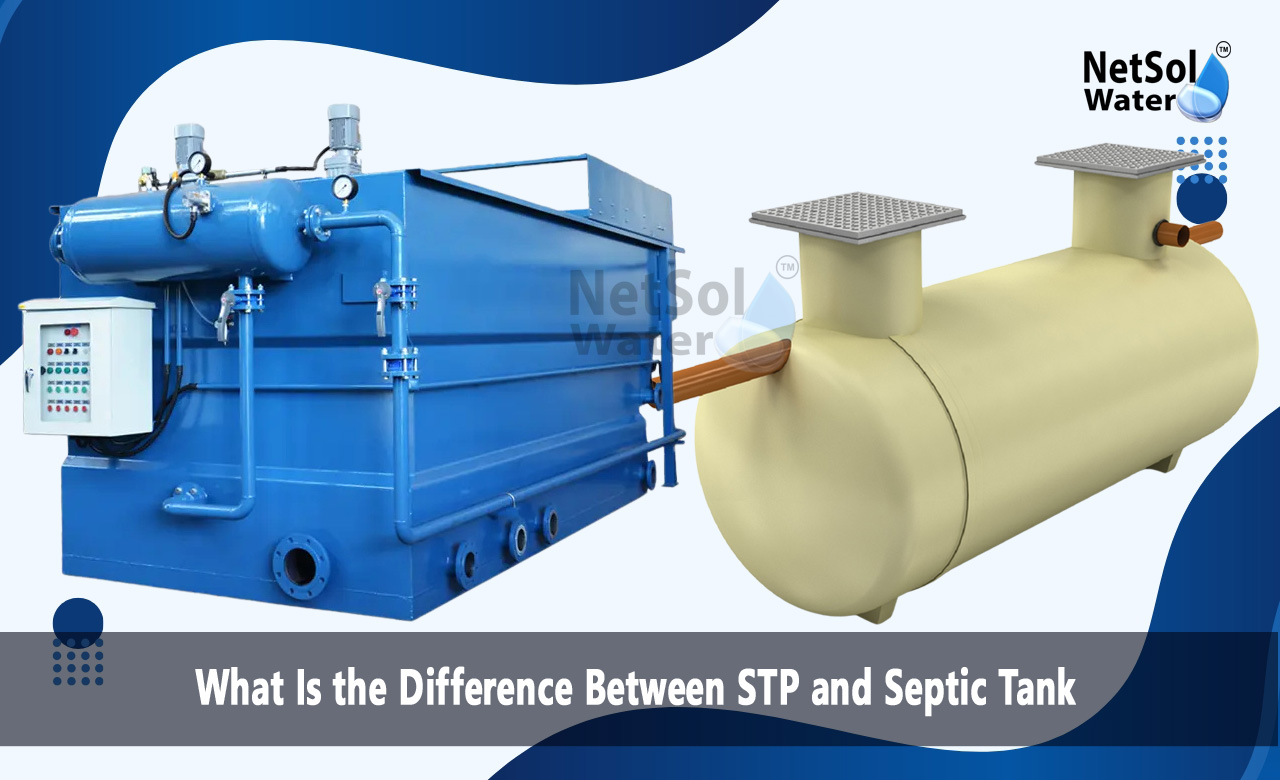What Is the Difference Between STP and Septic Tank?
Understanding the Difference Between STP and Septic Tank? helps in choosing the right system for wastewater treatment. Many people face confusion when they need to decide on a solution for sewage management. Wastewater treatment plays an important role in keeping water clean and protecting health. An STP treats large amounts of wastewater in steps. A septic tank handles sewage on site for a single property. Both serve to protect soil and water sources. Choosing the right one saves money and reduces risk of pollution.
Purpose of STP and Septic Tank
A clear view of the purpose helps in choosing the best option. Knowing what each system aims to do sets the stage for deeper comparison. Let us have a look at some of the key points in their goals.
STP
An STP or sewage treatment plant works in stages. It gathers wastewater from many sources. It sends water through filters and biological reactors. These stages remove solids and harmful microbes. The treated water meets standards before it returns to the environment. An STP handles large volumes in a central location.
Septic Tank
A septic tank holds sewage from one home or building. It traps solids at the bottom and lets liquid flow out. The liquid moves into a drain field in the ground. There bacteria break down organic matter further. A septic tank works on site without complex equipment. It serves a small number of users.
Treatment Process
Knowing how each system treats wastewater shows their core difference. The way they handle waste decides their design and upkeep. Let us have a look at some details in their treatment steps.
STP Process
An STP moves water through several steps in a row. First it filters out large particles. Then it uses bacteria to eat organic matter. Next it clarifies and disinfects the water. Finally it tests the quality before release. This multi-step process works fast and meets strict norms.
Septic Tank Process
A septic tank works in a single chamber or two. It holds sewage and lets solids settle down. Liquids move out into a soil field. Bacteria in the soil further clean the water. The process relies on simple settling and natural breakdown. It works slowly and needs enough ground space.
Read: Sewage Treatment Plant Manufacturer
Design and Capacity
The design and size of a system must match its use case. This choice affects installation and performance. Let us have a look at some factors in their design and capacity.
STP Design
An STP needs multiple tanks or reactors. It may sit above ground or be partly buried. It uses pumps and blowers to move water and air. The capacity can range from a few thousand liters to millions per day. Engineers plan the layout to meet expected flow and quality.
Septic Tank Design
A septic tank sits underground near the building it serves. It has one or two concrete chambers. It needs a field of pipes or trenches for the outflow. The tank size matches the number of users and water use. It avoids pumps by relying on gravity for flow.
Maintenance Requirements
Maintenance keeps each system working well over time. The ease of care and cost vary between the two. Let us have a look at some maintenance needs that each system has.
STP Maintenance
An STP needs regular checks on pumps and filters. Operators clean screens and measure bacterial activity. They add chemicals or control airflow in reactors. They also handle sludge that builds up in tanks. A trained person must visit the site often.
Septic Tank Maintenance
A septic tank needs pumping every few years. Technicians remove the sludge from the bottom. They inspect the drain field for blockages. They look for leaks or cracks in the tank walls. Homeowners must track their water use to avoid overload.
Cost and Installation
Cost and installation shape the decision for many projects. Upfront and long-term expenses differ widely. Let us have a look at some cost and fitting factors for each option.
STP Cost
An STP costs more to set up than a septic tank. The site work and equipment add to the price. It also needs a skilled team to build and run it. Operating costs include power and chemicals. Over time these running costs add up.
Septic Tank Cost
A septic tank costs less to install. It needs only a tank and a drain field. Labour and material costs stay low. Running cost comes from the occasional pump-out. Homeowners save on power and chemicals.
Environmental Impact
How each system affects the environment can guide your choice. Both aim to protect water and soil. Let us have a look at some ways they differ in their impact.
STP Impact
An STP cleans water to a high standard. It removes almost all harmful microbes and solids. It lets treated water return to rivers or oceans safely. It can serve many users in one spot. This helps control pollution in urban areas.
Septic Tank Impact
A septic tank treats water in the soil near the site. It relies on natural bacteria in the ground. This approach works when soil conditions suit it. If the field backs up or the soil cannot drain well it may pollute. It can harm groundwater if it fails.
Conclusion
Understanding the difference between STP and Septic tank makes it easier to choose the right wastewater solution. An STP works best for large communities and meets high standards. A septic tank suits single homes with space for a drain field. Both systems protect health and the environment.
If you need help picking or installing the right system feel free to get in touch. Our team can offer more information or set up a consultation.
Contact Netsol Water at:
Phone: +91-9650608473, Email: enquiry@netsolwater.com



